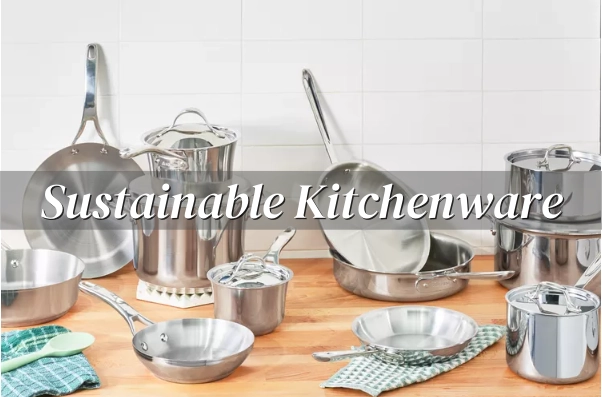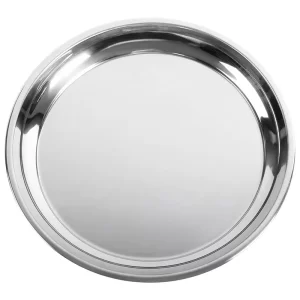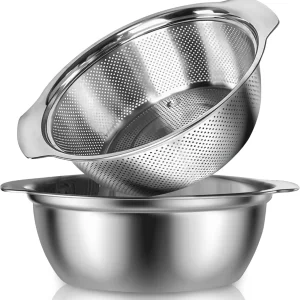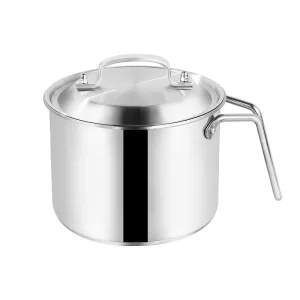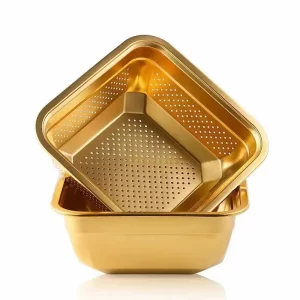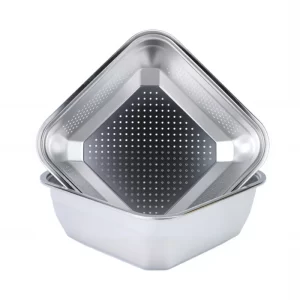Families and catering establishments widely use stainless steel cookware because it is corrosion-proof, conducts heat evenly, and is easy to clean. But for most, the food sticking to the pan is a problem when cooking in stainless steel cookware, especially when pan-frying foods such as fish, meat, and eggs. This not only affects the cooking outcome, but also makes it more difficult to clean. So, how do you create a non-stick surface in stainless steel cookware? In this article, we will cover some methods, from theory to practice, to provide you with hands-on solutions.
Understanding the Reasons for the Sticking of Stainless Steel Cookware
Stainless steel cookware itself is not coated like a non-stick pan, and the surface structure of stainless steel may cause food to stick to the bottom of the pan. The reasons are generally the following:
- Surface roughness: Although the surface of stainless steel is smooth, there are still some tiny pores or irregular areas at the microscopic level. Such abnormally formed surface structures may contribute to sticking of food.
- Poor temperature regulation: Overheating at high temperature causes instant evaporation of the water content in the food, forming a thin film, so the food can stick to the pan bottom more readily.
- Lack of grease: Grease is the most significant substance that keeps food from sticking on the pan. If there is not enough grease in the pot, then the surface area between the pot bottom and the food will be greater, and sticking is likely to occur.
After understanding these reasons, we can use some effective methods to improve the performance of stainless steel pots and reduce the sticking problem.
How to Make Stainless Steel Cookware Non-Stick? Common Methods and Tips
Preheat the Pot to Avoid Heating the Empty Pot
Most people put food into a cold pot for warming when using a stainless steel pot, and that would cause food to stick more easily on the pot. The right thing is to heat the pot first, which can make the pot warm evenly and avoid the formation of large temperature differences.
- Preheat the pot for 2-3 minutes on medium heat so that the internal temperature of the pot is uniform.
- After preheating, add an appropriate amount of oil, apply it evenly over the bottom of the pot and then heat the oil to a desired temperature before adding food.
By preheating, the tiny pores on the pot’s surface will expand during the process of heating, which will reduce the food’s contact area with the bottom of the pot and hence stop the sticking phenomenon effectively.
Use of the Right Amount of Grease
Grease plays a vital role when stainless steel is used for cooking. Proper grease can form a lubricating layer at the bottom of the pan, reducing contact between food and the pan’s bottom and preventing sticking.
- Hot pan and cold oil method: Heat the pan to the appropriate temperature in advance and then pour oil. The oil is only able to function after being heated, which means there is less food stuck on the pan.
- Proper oil choice: Vegetable oils such as olive oil and rapeseed oil are more suitable for stainless steel pots because they are heat-stable and not so easily willing to release toxic substances.
Don’t forget, when cooking, add enough grease and maintain oil temperature neither too high nor too low.
Physical Non-Stick Technology
Stainless steel is inferior to coating in non-stick property, but there are a few physical methods to improve the “non-stick” of the pot. For example:
- Surface treatment: Some stainless steel pots go through special surface treatment, such as polishing or pickling, which might significantly increase the smoothness of the pot, decrease food and pot friction, and decrease the likelihood of sticking.
- Honeycomb structure technology: This technology generally improves the anti-stick property of the pot via the incorporation of a honeycomb-like structure on the pot’s surface, ideally for woks and frying pans.
- Bionic design: i.e., lotus leaf bionic technology that can mimic the surface morphology of lotus leaves in nature to form a tiny physical barrier, making it more difficult for food to stick on the pot.
These physical treatment processes effectively improve the performance of stainless steel pots on the surface and reduce the probability of food getting stuck on the pot.
Apply Coating Technology
For customers who do not like sticking to the pot even further, you can choose stainless steel pots with coatings. The coating not only provides a non-stick effect, but also upgrades the resistance of the pot.
- Keramische Beschichtung: Ceramic coating is heat-resistant and can be used for cooking dishes that require high temperatures, e.g., stir-frying and barbecue, and does not contain harmful substances, therefore, it is healthier.
- PTFE coating (Teflon): The coating is very low in friction, such that food will barely adhere to the pot, but be cautious of safe use at high temperatures and not to exceed the recommended temperature.
When selecting coated stainless steel pots, it is advisable to select high-quality coating materials to prevent shedding of coating or early wear.
Reinigung und Wartung
The pot maintenance and cleaning also influence its non-stick property directly. Below are some stainless steel pot maintenance tips:
- Cleanliness with care: Metal wire balls and excessively hard cleaning equipment must be avoided. Soft sponges and mild detergents must be used to clean the pots so as not to scratch the pot surface.
- Don’t over-clean: In case oil film has accumulated on the pot’s surface, you may scale down the excessive cleaning so as not to damage its non-stick coating.
How to Choose Proper Stainless Steel Pots?
If you are going to buy stainless steel pots, consider the following points in choosing:
- Pot coating: If you wish the pot to have a good non-stick effect, you can employ pots with ceramic coating or PTFE coating. For people who want pots without coating, it is advisable to employ high-quality stainless steel pots that have special surface treatment.
- Pot quality: Choose pots that have thick and homogeneous material. Such pots can sustain heat distribution better and avoid local overheating resulting in sticking of food to the pot.
- Brand and after-sales: Choose a well-known brand, which not only ensures the quality of the pot, but also provides long-term after-sales service to secure the service life.
Yongyu – Providing Stainless Steel Cookware with High Quality
If you are looking for excellent kitchen utensils, Yongyu is a good choice. With its professional production and marketing of stainless steel cookware and catering equipment, Yongyu provides various stainless steel cookware with high-performance coating and no coating, which allow you to achieve non-stick effects in cooking. Our products also provide customized services according to your diverse kitchen needs.
Choose Yongyu and enjoy a healthy and tasty cooking experience.

